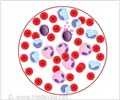- Lancet. 2009 Jul 25;374(9686):324-39. Epub 2009 Jun 21. Multiple myeloma., Raab MS, Podar K, Breitkreutz I, Richardson PG, Anderson KC, LeBow Institute for Myeloma Therapeutics and Jerome Lipper Center for Multiple Myeloma Research, Dana-Farber Cancer Institute, Harvard Medical School, Boston, MA 02115, USA.
Staging And Treatment
Once multiple myeloma is detected it becomes important to stage the disease for effective treatment. The disease may be categorized as stage I, II, III depending on the number of myeloma cells and also on the extent to which the cancer has affected other organs in the body such as the kidneys and the bones.
Treatment of multiple myeloma depends on the stage and symptoms of the disease. If symptoms are absent the doctor might chose to monitor closely and start the treatment only after the symptoms appear.
Treatment methods include-
- Anticancer drug therapy
Treatment of multiple myeloma with anticancer drugs is pivotal to the treatment. This method of treatment is known as systemic therapy because the drugs directly enter the bloodstream and destroy myeloma cells present throughout the body.
Several types of drugs are put to use to attack the disease and each one of them acts in a different way.
Drugs such as cyclphosphamide, melphalan, doxorubicin, vincristine, prednisone, thalidomide, Lenalidomide and bortezomib are given in various combination. These drugs are administered orally or intravenously as an out- patient treatment.
- Stem cell transplantation-
High doses of radiation or drug treatment tends to destroy the normal and the malignant blood cells. At such a time stem cell transplant is the answer to replace the lost tissues.
The patient receives healthy stem cells through a flexible tube placed in a large vein in the neck or chest area. New blood cells develop from the transplanted stem cells.
The infused stem cells may come from the patient himself or from a donor:
- Autologous stem cell transplantation is when the patient's own stem cells are removed and the cells are treated to kill the malignant myeloma cells. The purified stem cells are then frozen. After the patient undergoes high-dose treatment, the frozen stem cells are thawed and infused back into the patient.
- Allogeneic stem cell transplantation: When healthy stem cells from a donor such as a sibling or a parent are used it is known as Allogeneic stem cell transplantation. Sometimes the donor may be an unrelated person whose cells match that of the recipient’s. When the stem cells come from the patient’s identical twin it is known as syngeneic stem cell transplant.
Stem cell transplants are carried out in the hospitals after which the patient is ready to receive high dose chemo or radio-therapy treatment. Some patients have two or more transplants.
- Radiation therapy
Also called radiotherapy this treatment makes use of high-energy radiation to destroy myeloma cells and to help control pain. This method of treatment may be localized or it may be a whole- body irradiation before a stem cell transplant. The treatment may be carried out over a course of 4-5 weeks or sometimes for shorter periods.
Some of the side effects of these treatments include frequent infections, easy bruising, fatigue, skin sensitivity (in the radiated areas), loss of hair, loss of appetite, nausea, vomiting, diarrhea, skin rashes, oral sores, numbness, drowsiness, tingling in hands & feet, blurred vision.







